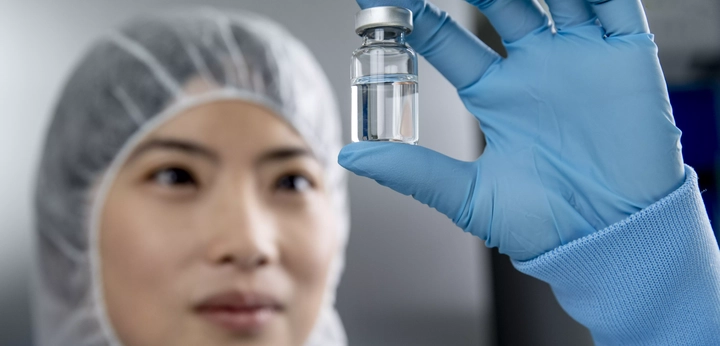
How can pharmaceutical drug containers enhance drug stability?
Biologics are an innovative class of pharmaceuticals intended to fight the most challenging diseases, such as chronic illnesses and cancer. However, their complicated molecular structure tends to increase their sensitivity to interactions with drug containment materials potentially resulting in loss of biological activity. Different drug containers, and indeed different grades of pharmaceutical glass, are deployed to protect biologics and ensure drug stability. Two of the most critical objectives for pharmaceutical packaging manufacturers are ease-of-processibility on the filling line and guaranteed full-shelf life stability.
The challenge is managing the multiple touchpoints across the manufacturing and supply chain. Pharmaceutical manufacturers must collaborate closely with packaging designers, who must subsequently collaborate with raw material suppliers. Such a tight-knit approach to drug production and packaging enables drug containers to ensure drug stability for the entire duration of a given biologic’s shelf-life.
Innovating the manufacturing process of drug containers for enhanced drug stability
Biologics and biosimilars are often, though not always, targeted at relatively small patient cohorts. Small batch production is not as standard as production scale quantities in pharmaceutical markets; thus, filling lines might struggle with rapid changeover requirements. At SCHOTT Pharma, we have envisaged a novel solution to the challenge of faster adapting filling machines.
Optimizing drug containers for drug stability
The individual drug container must be optimized to protect extremely sensitive biologics and biosimilars. Coating the internal surface of glass packaging is increasingly common, as it allows the drug containment manufacturer to add various properties explicitly designed to enhance drug stability or improve processability. At SCHOTT Pharma, we use plasma impulse chemical vapor deposition, or PICVD, to apply different kinds of inner coatings (Si-O-C-H or SiO2) to vials. These layers are transparent, pore-free, and chemically uniform. They are compatible with all downstream processes (as e.g. washing and depyrogenation), making them a value-added solution for various drug container applications. Their outstanding property is the covalent bond to the glass substrate.One such solution is our EVERIC® lyo, which has a hydrophobic inner coating that allows each container to be emptied quickly and without persistent residue. The liquid adhesion to the container surface is significantly reduced. Although, the main benefit of this inner hydrophobicity is the elimination of fogging during lyophilization, resulting in reduced reject rates and therefore higher efficiency during processing.

Find more coated glass vial solutions
Our next-generation glass vials are suitable for biotech drugs with highest sensitivity and high potency solutions. These containers must align various key stability features into a single unit to ensure the stability of such valuable products. A superior extractables and leachables (E&L) profile, for example, must be combined with an optimized strength for a reduced risk during processing.
Packaging and protecting pharmaceutical products
The SCHOTT Pharma team leads the way in this era. We are one of the world’s leading drug containment and delivery solution provider for drug containers for pharmaceutical products. We offer a versatile product portfolio for drug containment and delivery solutions, including syringes, cartridges, vials, and ampoules made of borosilicate glass and COC polymer for SCHOTT TOPPAC® syringes.
Polymers are increasingly central to the packaging and processing of pharmaceutical goods. Cyclic olefin copolymer (COC) is a standout material that excels as a pharma packaging solution. COC is not only break-resistant and lightweight but it has a low particle level and high moisture barrier functionalities. SCHOTT TOPPAC® syringes subsequently allow for longer storage of highly sensitive injectables.
If you would like to learn more about our drug containers for enhanced drug stability, please get in touch by filling out the contact form below.

Diana Löber
Global Product Manager Specialty Vials & adaptiQ®
Register for the latest news
Stay up-to-date with information about SCHOTT Pharma products and services and register for our newsletter.